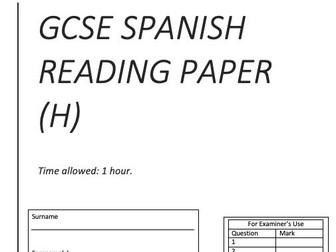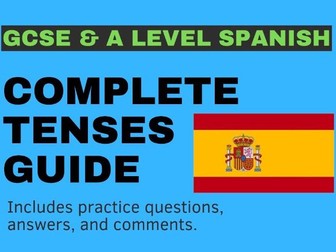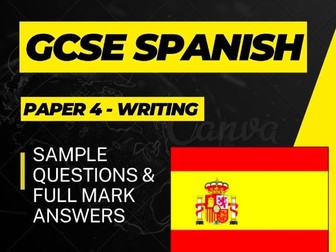
GCSE SPANISH PAPER 3 MOCK (READING, H)
This paper is designed to be identical to that of an official AQA examination. It accurately mimics the question style, content, and varying difficulty of a past paper 3 (higher).
Although the content would appear at first glance to be created by AQA, it is an entirely independent paper with new questions created from scratch.
For this reason, it is perfect for a y10/y11 mock exam. You can guarantee that students will have no prior knowledge of the questions, (most exam papers used as mocks are accessible online). This ensures that the marks achieved by students are more of an accurate representation of their genuine level.
The paper is composed as follows:
Section A- questions and answers in English (33 marks- identical to the real thing).
Jobs, career choices, and ambitions. True, False, or Not Mentioned.
Travel and tourism. Finish the sentences. Write the correct letter in each box.
Technology in everyday life. Answer the questions in English.
Global issues- poverty. Which three statements are true?
Customs and festivals in Spanish speaking countries. Positive, Negative, or Positive and Negative.
Free time activities. Answer the questions in English.
Local areas of interest. Finish the sentences. Write the correct letter in each box.
Section B- questions and answers in Spanish (18 marks- identical to the real thing).
8) Adapted extracts from Spanish novels. ¿Sobre qué está escribiendo? Escribe la letra correcta en cada casilla.
9) Social issues, voluntary work. Termina las frases en español.
10) Travel and tourism. Verdadero, Falso, o No Mencionado.
11) Me, my family, and friends. Contesta las preguntas. Escribe la letra correcta en cada casilla.
Section C- translation into English (9 marks- identical to the real thing)
12) My studies + jobs, career choices, and ambitions.


